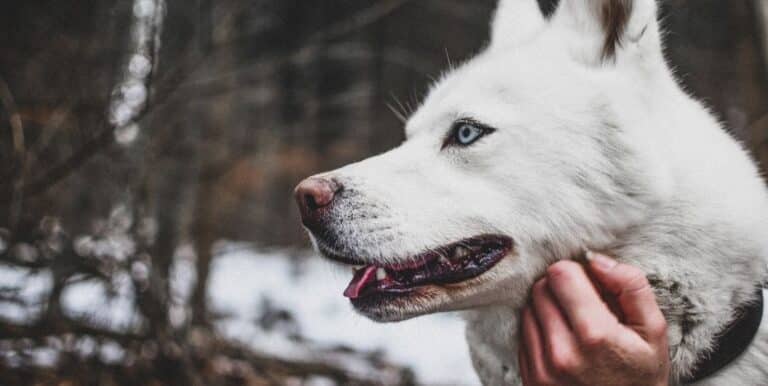Why do Dogs Chase Their Tails?

Most experts think that dogs chase their tails — also known as whirling — for multiple reasons, including boredom, hyperactivity, litter experience and the desire for attention. Other theories assert that the activity comes from the prey drive, stress, discomfort, medical problems or genetics. Much more research is necessary before professionals can say for sure what causes the behavior.
Boredom
A number of professionals believe that dogs chase their tails for one reason: they are bored. Essentially, there is nothing going on that captures the dog’s attention, so when the animal catches sight of the tail on the edges of its line of vision, it notices the movement. The fact the tail is attached is not really a consideration, but the movement and the chance for some physical and mental activity is attractive. Frequent tail chasing might be a sign that it’s time for the owner to provide some other amusements.
Hyperactivity
Another idea that might explain why whirling is more common for young dogs is that puppies tend to be more energetic than adults. They might resort to it as a pastime because they want something physical to do. Once they get tired enough, they usually stop.

Experience from Litter
Although this behavior can show up at any age, it seems to be more common with pups. Part of the reason for this might be that, in a litter, it’s pretty standard for the tail of one animal to be close to the face of another. The dogs might chase their own tails when they’re young because they don’t yet really grasp that they’re going after their own body part.
Attention and Conditioning
Similar to people, most dogs have a basic desire for attention and affection. When owners react positively to the behavior, such as rewarding their pets with a treat or some petting, the animals eventually learn that they can use tail chasing to manipulate what people do and get what they want. In essence, they whirl because they’ve been conditioned to do it.
Prey Drive
Before people domesticated them thousands of years ago, dogs were mainly pack animals that relied on their instincts to live, one of which was the prey drive, or the natural desire to chase and kill smaller things to eat. One theory is that a dog seeing its own tail is acting on this compulsion to a certain degree, attempting to catch it in the same way it would catch animals for food. According to some experts, dogs might go after themselves in this way because they aren’t connected well enough to their environment, often described as “needing to connect the front end to the hind end” or “needing to stay in its head.” They respond so strongly to the prey instinct and memories of physical pain or annoyance that they don’t process other things in their surroundings that could clue them in that it’s their own tail they’re attacking.
Stress
Looking at whirling as being in the same category as other compulsive behaviors dogs do, another possibility is that it evolves as a stress response. The animal might use it as a distraction from the negative feelings that happen when it is abused, for example, or when it is overstimulated and too excited. If this is the case, it might start in response to just one thing and then spread out to others, becoming a more generalized coping mechanism.

Discomfort
Dogs also may choose to chase their tails because there is a physical problem or discomfort of some type, such as an itchy infection. Canine behavior demands that the animal attempt to address the origin of the discomfort, so they try as hard as they can to reach to their hind end. This might be the issue if the behavior starts relatively randomly.
Underlying Medical Conditions and Genetics
Veterinarians and researchers are looking into the possibility that this behavior stems from physical imbalances in a dog’s system, which might be linked to genetics. Perhaps most notable in this area is a 2010 study led by Dr. Nicholas Dodman of Tufts University Cummings School of Veterinary Medicine, which showed that tail chasing is more common in animals that have vitamin B6 and vitamin C deficiencies or that have been neutered. Dodman’s team also discovered that, when looking at Bull Terriers and German Shepherds, animals that chased their tail also seemed less outgoing and didn’t like to be exposed to noise as much. Dobermans with a variant in the cadherin 2 gene engaged in flank sucking more frequently than those that didn’t have it. Even though this is not the same as tail chasing, it is still significant because it strongly suggests that canine behavior and genetics are linked, and that people might find a specific part of a dog’s DNA that ties to whirling with additional research.
Veterinary professionals and scientists looking into this issue still have a long way to go before they prove anything conclusively, but the hope is that future discoveries will open the door to treating the problem with medication. This solution would not be appropriate for all canines, but it might provide some relief for many of them. Over time, if people do find a genetic connection, it might be possible to use techniques such as selective breeding to weed it out.






